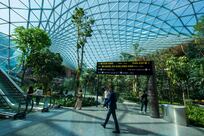At the beginning of every year, the Consumer Electronics Show in Las Vegas, Mobile World Congress (MWC) in Barcelona, and CeBIT in Hanover, Germany, bring together leaders from across the technology industry, providing forums for product launches and discussions highlighting trends in technology development.
While nations apart, the global themes addressed are remarkably similar, and sharply delineate between hype and effective developments.
What we saw this year: the cloud is here to stay; the way we consume entertainment is changing dramatically; and, in less than a decade, one billion more people will be using mobile devices and accessing the internet.
The cloud computing market is worth US$31 billion (Dh113.86bn), according to Gartner, the technology research firm, and is expected to grow 25 per cent per year as more devices go online, generating more data that users will want to access from anywhere at any time.
"The growth of the cloud is a very exciting development for consumers, but from a technology perspective is likely to further stress global data centres already consuming the energy equivalent of some 30 nuclear power plants," says Sami Issa, the executive director of technology ecosystem development at the Advanced Technology Investment Company (Atic).
"The research we're driving here in Abu Dhabi focuses significantly on energy efficiency, which will be a critical area of development as data-intensive trends like the cloud continue to grow."
A wider range of devices with greater computing power are coming to the market to cater to different types of consumers, from 4-inch phones to 10-inch tablets and 6-inch phablets. The living room has become a battleground of different screens, and while many predict the death of the television, manufacturers are hoping it will play a central role with smart TVs that connect with the barrage of these new devices, which are increasingly becoming more sophisticated.
By next year smartphones will sport the latest in visual technology, 4K screens, that is 4 times the clarity of HD screens. With all these devices users will be in want of more apps, especially entertainment.
One of the most exciting, but also worrying, expectations is the number of new devices that are expected to go online. Mobile networks in their current state are incapable of supporting such high levels of data consumption. Telecoma companies from all over the world have been investing in long-term evolution (LTE), a super-speed mobile broadband also known as 4G. The Arabian Gulf region has led the way with players in the UAE, Saudi Arabia and Kuwait already offering LTE to customers.
While this new technology requires significant investment, industry leaders at the MWC gathering in Barcelona agreed that such connectivity would have tremendous impact on a nation's economy, generating new jobs and pulling people above the poverty line.
With only one third of the world's population connected to the internet, the potential for growth is tremendous", according to Mr Issa.
"These new trends, coupled with the emergence of the internet of things driving an explosive need for sensing technology, will push demand in new areas," he says.
"From a foundry perspective, this means larger-scale technologies like micro-electromechanical systems will become an increasingly significant production sector."




